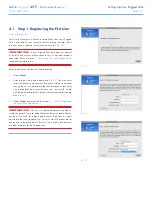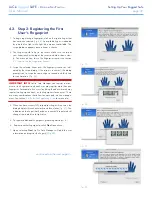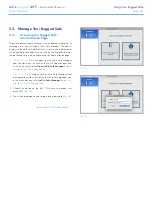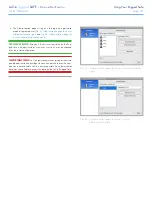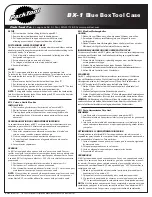
LaCie
rugged
SAFE
• D
esign
by
n
eil
P
oulton
Formatting Your Hard Drive
User Manual
page 33
6. Formatting Your LaCie Rugged Safe
The first user registration asks if you would like to format your LaCie
Rugged Safe in FAT32. FAT32 is a file system best used when shar-
ing a drive between Mac and Windows operating systems. You may
elect not to format the drive in FAT32 if you prefer to use your Rug-
ged Safe with a file system optimized for a specific operating system.
Please note that you may change the file system at any time, though
the formatting process will erase all data on the disk drive.
What is Formatting?
Formatting a disk entails the following: the operating system erases
all of the bookkeeping information on the disk; tests the disk to
make sure that all of the sectors are reliable; marks bad sectors (i.e.,
those that are scratched); and creates internal address tables that it
later uses to locate information. LaCie Safe Manager offers to for-
mat your drive when first used, but you can elect not to, or reformat
by following the instructions in this section.
Formatting includes the option to divide a hard drive into sections,
called partitions. A partition is a fraction of the hard drive’s storage
capacity that is created to contain files and data. LaCie does not
support using the Rugged Safe with more than one data partition.
6.1. One Partition for the Rugged
Safe
Please note that LaCie does not support using the Rugged Safe with
more than one partition. Dividing the Rugged Safe into more than
one partition may create problems when operating the device and
a loss of data.
LaCie Safe Manager formats the device into one FAT32 partition but
you may choose to format in HFS or NTFS. No matter the format,
please do not divide the disk into more than one partition since
LaCie cannot guarantee optimal performance and you risk losing
data.
File System Formats
There are three different file system format categories:
FAT32 (MS-DOS), NTFS, and Mac OS Extended (HFS+).
See the table below for more information.
Use NTFS if:
...you will be using the drive only with Windows XP, Windows
Vista, or Windows 7 since performance will generally be
greater compared to FAT32. This file system is compatible in
read only mode with Mac OS 10.3 and higher.
Use HFS+ if:
...you will be using the drive only with the Mac OS since
performance will generally be greater compared to FAT32.
This file system is not compatible with Windows.
Use FAT32 if:
...you will be using your drive with both Windows and Mac
OS 9.x or 10.x.
TECHNICAL NOTE:
FAT32 (MS-DOS) is recommended for sharing
a hard drive with Mac and Windows. However, the FAT32 file system
generally runs slower than HFS+ (Mac) or NTFS (Windows). FAT32
also has a single file size limit of 4GB.
IMPORTANT INFO:
Reformatting will erase everything from the
hard drive. Back up any data that you want to preserve before re-
formatting.



